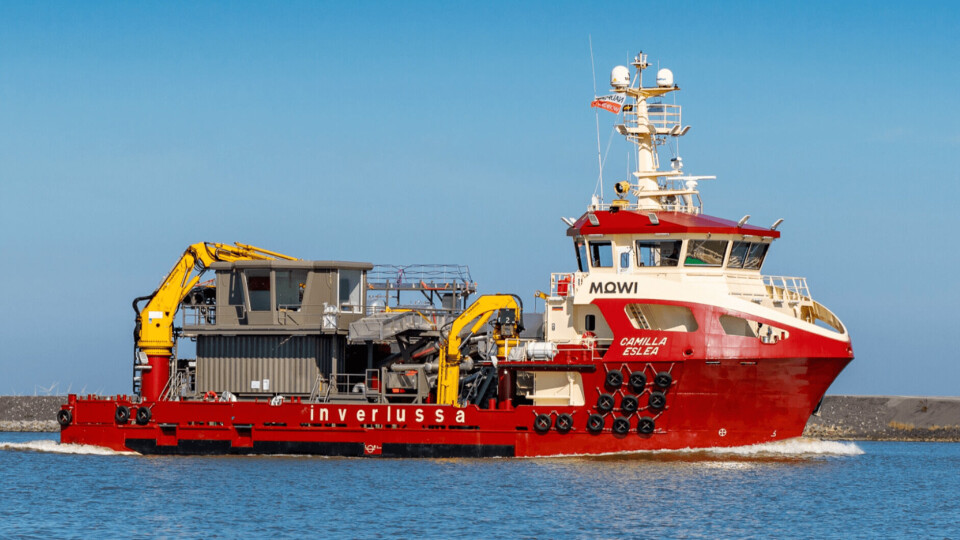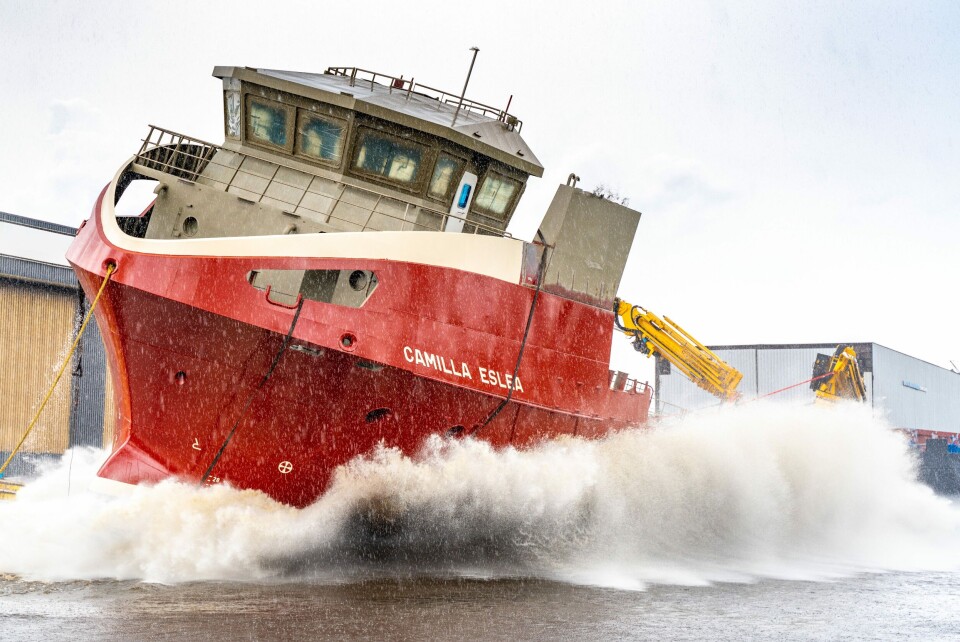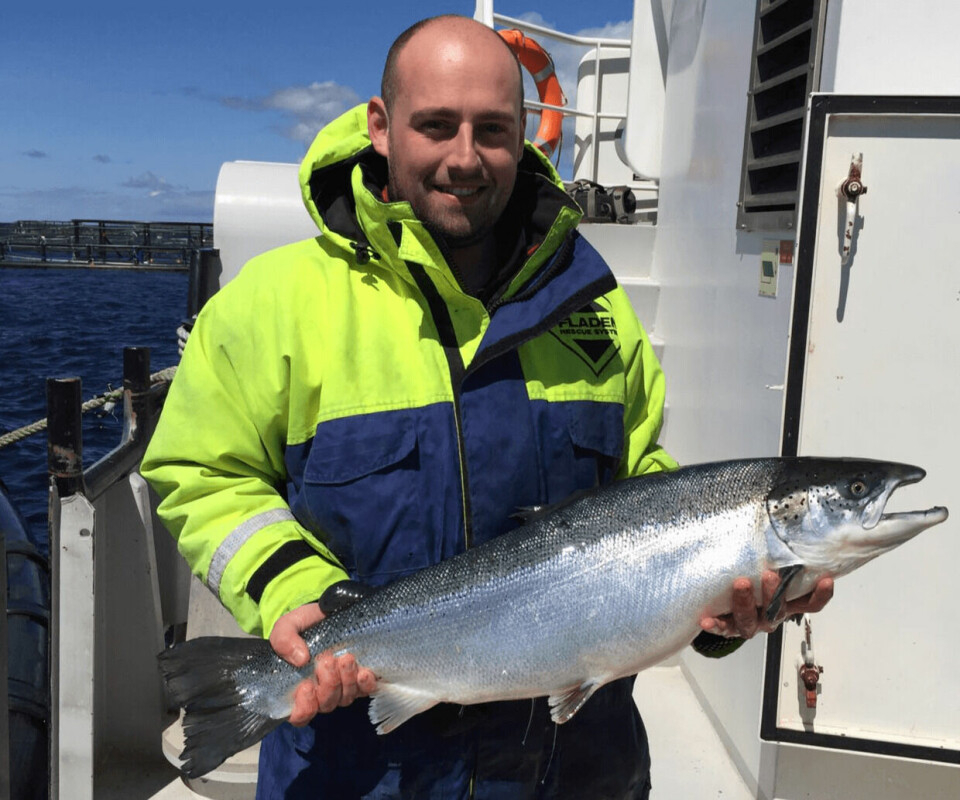
Inverlussa flagship is readied for delousing debut
Mowi Scotland’s capability to remove sea lice from its salmon will get a significant boost within the next few days when a new Thermolicer vessel begins work.
The newly built Camilla Eslea was recently delivered to Mull-based Inverlussa Marine Services after being fitted with the world’s highest-capacity Thermolicer, which has a throughput of 300 tonnes of fish per hour and is in the final stages of commissioning.
At 35 metres long and 14.3 metres wide, with a deck space of 377m², the Camilla Eslea is the biggest of the 15 boats in Inverlussa’s fleet by a considerable margin.

“It’s about nine or 10 metres longer and three or four metres wider than our next biggest vessel,” said Inverlussa managing director Ben Wilson.
Dynamic positioning
The boat was built at Groningen in the Netherlands by Nauplius Workboats and contains several firsts for Scottish aquaculture.
“We’ve been very happy with the vessel so far,” said Wilson. “There is equipment on it that’s new to fish farming in Scotland, like diesel electric, like dynamic positioning, and a heat recovery system for the Thermolicer.”
Dynamic positioning should allow the vessel to be operated in the kind of conditions that would normally prevent delousing, he said.
“The dynamic positioning will hold the boat at station if you want to do that, but it also assists with manoeuvring alongside the cage in bad weather, so it maybe just gives us that extra operational window on poor days,” explained the Inverlussa boss. “It is a safer way of operating around cages.”

Diesel electric propulsion
The Camilla Eslea also uses the same diesel electric generators for propulsion and delousing operations, saving space on board and improving efficiency.
“The idea is that you don’t have main engines and shafts running the propulsion side of the vessel and separate large generators running the de-licing side,” said Wilson.
“This vessel only has generators, and the propulsion is electric. It’s a very flexible system. When you’re tied up at the cage de-licing you don’t need the power for propulsion, so it uses the power to de-lice.
“It’s a more efficient way to operate. Fewer generators and fewer engines, but with the generators you have the system is very flexible and you have high redundancy.”
12 crew
The arrival of the Camilla Eslea has lifted the number of Inverlussa’s employees above 100.
“The Camilla Eslea has increased that quite a bit because that’s 12 crew on her alone, plus one more person ashore. That’s 13 jobs that boat has created,” said Wilson. “They’re good quality jobs and we’re lucky to have lots of good people.”

Mowi Scotland’s deputy production director, Sean Anderson, said: “We are looking forward to the Camilla Eslea being ready for operations at the end of this month.
“It is fitted with the world’s highest capacity Thermolicer, which will nicely complement the myriad of ways we effectively manage for sea lice, including cleaner fish and freshwater treatments.
“This added capacity for sea lice management will allow us to treat more pens, quickly, which is best for fish health and welfare. The vessel will be operated by specialists and has a very high-capacity vacuum pumping system which is installed below deck for maximum focus on fish welfare and optimal fish handling conditions, ensuring fish handling is as gentle and fish friendly as possible.”
Watch the launch of the Camilla Eslea below.























































